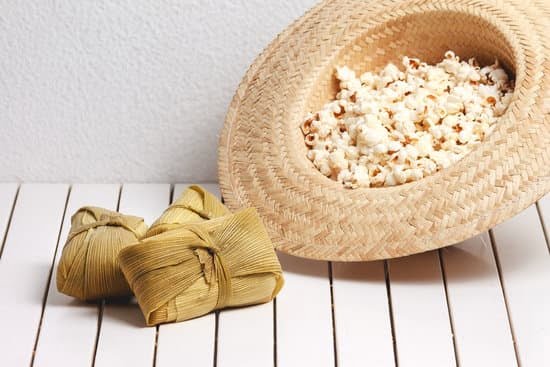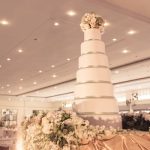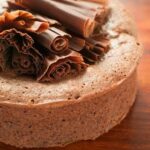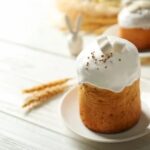Mastering the art of cake decorating requires skill, precision, and creativity. And at the heart of this craft lies the practice of frosting. Perfecting your frosting techniques can elevate your cake designs from ordinary to extraordinary. Whether you’re a beginner or an experienced baker, investing time and effort in practicing frosting is essential for achieving cake decorating success.
By dedicating time to practice frosting, you can improve your skills and develop a deeper understanding of different techniques. With each practice session, you’ll gain confidence and familiarity with various types of frosting, allowing you to create cakes that are not only visually stunning but also delicious.
In this blog post, we will explore the importance of mastering frosting techniques for cake decorating success. We will delve into different types of frosting commonly used in cake decorating and discuss the pros and cons of each. Additionally, we will provide tips on choosing the right type of frosting for your desired cake design. So get ready to take your cake decorating skills to new heights as we dive into the world of practice frosting.
Understanding the Basics
When it comes to cake decorating, frosting plays a crucial role in both the taste and appearance of the final product. The type of frosting you choose can greatly impact the overall outcome of your cake design. In this section, we will explore the different types of frosting commonly used in cake decorating, discuss their pros and cons, and provide tips for choosing the right frosting for your desired cake design.
One popular type of frosting is buttercream. Buttercream is made from a mixture of butter, powdered sugar, and flavorings such as vanilla or chocolate. It is known for its rich and creamy texture, making it easy to spread and perfect for piping intricate designs. However, one downside of buttercream is that it can be sensitive to temperature changes and may melt in hot weather.
Another common type of frosting is fondant. Fondant is a smooth icing made from sugar, water, and gelatin or glycerin. It provides a sleek finish and allows for more intricate designs than buttercream. Fondant is also great for creating 3D decorations or covering irregular-shaped cakes. On the other hand, fondant has a chewy texture that some people may find less desirable than buttercream.
Ganache is a versatile frosting made from melted chocolate and cream. It has a glossy finish that adds an elegant touch to any cake design. Ganache can be used as both an icing and filling, providing a decadent taste experience with its rich chocolate flavor. However, ganache can harden quickly when cooled, making it challenging to work with for some beginners.
When choosing which type of frosting to use for your cake design, consider factors such as the weather conditions (if your event will be held outdoors), the desired taste and texture of your finished cake, as well as your own skill level with handling different types of frostings.
Tools of the Trade
When it comes to practicing frosting techniques for cake decorating, having the right tools is essential. Here is a list of necessary equipment that every aspiring cake decorator should have:
- Piping Bags: Piping bags are a basic necessity for any cake decorator. They come in various sizes and materials such as plastic or reusable silicone. These bags allow you to easily control the flow of frosting and create beautiful designs on your cakes.
- Piping Tips: Piping tips are attached to the end of piping bags to create different frosting designs. They come in a wide range of shapes and sizes, each producing unique patterns and effects. Some popular tips include round tips for dots or writing, star tips for rosettes or shells, and petal tips for flower designs.
- Spatulas: Spatulas are used for spreading and smoothing out frosting on cakes. Offset spatulas with angled blades make it easier to reach corners and achieve smooth finishes. Straight spatulas are great for applying a thin layer of crumb coat before final frosting.
- Bench Scraper: A bench scraper is an invaluable tool for achieving a perfectly smooth finish on your frosted cake. It helps remove excess frosting, creating sharp edges and clean lines.
- Turntable: A turntable is a rotating platform that allows you to easily rotate the cake while frosting it. This makes it much easier to apply smooth, even coats of frosting or create intricate designs without straining your wrist.
These are just some of the essential tools needed for practicing frosting techniques; however, there are many more specialized tools available depending on your desired designs. For beginners, investing in a basic set will give you a solid foundation to start practicing. Quality tools can often be found at baking supply stores or online retailers.
Having the right equipment is only half the battle; understanding each tool and its purpose is equally important. Take the time to familiarize yourself with each item, experimenting with different techniques and designs. By mastering these basic tools, you will be able to create beautiful and professional-looking cakes.
Remember, practice makes perfect. The more you practice using these essential tools, the better you will become at cake decorating. So don’t be afraid to experiment, try new techniques, and push the boundaries of your creativity. With dedication and practice, you will be on your way to becoming a skilled cake decorator in no time.
Mastering the Fundamentals
When it comes to cake decorating, mastering the fundamentals of frosting techniques is essential. The way you apply frosting can make or break the overall look and taste of your cake. In this section, we will guide you through a step-by-step process to help you perfect your frosting techniques and take your cake decorating skills to new heights.
1. Preparing the cake for frosting:
Before you start applying frosting, it is crucial to prepare your cake properly. Start by leveling the top of your cake layers if needed, using a serrated knife or a leveling tool. Then, use a brush to remove any loose crumbs from the surface. This step will ensure that your frosting goes on smoothly and evenly.
2. Achieving a smooth and even frosting base:
To achieve a smooth and even frosting base, begin by applying a thin layer of frosting called a crumb coat. This coat acts as an adhesive for the crumbs and helps create a clean canvas for your final layer of frosting. Use an offset spatula or a bench scraper to spread the crumb coat evenly around the sides and top of the cake.
Once you have applied the crumb coat, let it set in the refrigerator for about 15 minutes. This will firm up the frosting and help prevent crumbs from mixing into your final layer. After chilling, apply another thicker layer of frosting on top of the crumb coat using swirling motions with your spatula or scraper.
3. Understanding the importance of proper piping techniques:
Piping is an essential skill in cake decorating that allows you to create intricate designs and decorations with ease. To master piping techniques, start by choosing the right piping tip for your desired design – different tips create different patterns such as borders, rosettes, stars, or letters.
Prepare a disposable piping bag by fitting it with your chosen tip and fill it with frosting. Hold the bag at a 45-degree angle to the cake surface and apply even pressure as you pipe. Practice your piping on a flat surface before moving onto your cake to gain confidence and control.
4. Tips for creating beautiful and intricate designs with frosting:
To create beautiful designs with frosting, consider using various techniques such as buttercream flowers, ruffles, or lace patterns. Fondant cutouts can also be used to add dimension and detail to your cake.
Experiment with different colors by mixing food coloring into your icing, or use gel colors for more vibrant shades. Play around with textures by using different piping tips or spatulas. Don’t be afraid to get creative and try out different techniques – practice makes perfect.
By following these step-by-step instructions and practicing regularly, you will be well on your way to mastering the fundamentals of frosting techniques in cake decorating. Remember, each cake you decorate is an opportunity to improve and learn something new. So grab your spatula, mix up some frosting, and let your creativity shine.
Troubleshooting Common Issues
When it comes to cake decorating, even the most experienced bakers can run into issues with frosting. From uneven frosting to smudged designs, these mistakes can be frustrating and disheartening. However, with a few simple solutions and professional tricks up your sleeve, you can easily fix these frosting mishaps and salvage your cake.
One common problem encountered while frosting cakes is achieving an even and smooth finish. This can be particularly challenging when working with buttercream or cream cheese frostings, as they tend to be more prone to imperfections. To fix uneven frosting, start by refrigerating the cake for about 10 minutes.
This will firm up the frosting and make it easier to work with. Then, use a spatula or offset icing spatula to gently smooth out any uneven areas by applying slight pressure and spreading the frosting in a side-to-side motion.
Air bubbles are another issue that can occur during the frosting process. These bubbles can create unsightly holes or pockets in the finished product. To eliminate air bubbles, gently tap the cake on a hard surface after applying the frosting. This will help release any trapped air and create a smoother surface.
Smudged designs are yet another common mistake that can happen while decorating with frosting. Whether accidental smudging occurs from handling the cake or while attempting intricate designs, there are ways to fix this error. If you’ve accidentally smudged a design, simply use a clean finger or a small offset spatula to carefully smooth out and blend in the smudged area. Be gentle as you do this to avoid further damage.
| Common Issue | Solution |
|---|---|
| Uneven Frosting | Refrigerate the cake for 10 minutes, then use a spatula to smooth out any uneven areas. |
| Air Bubbles | Tap the cake gently on a hard surface to release trapped air bubbles. |
| Smudged Designs | Carefully use a clean finger or small offset spatula to blend and smooth out the smudged area. |
With these simple tips and tricks, you can easily fix frosting mistakes and achieve a flawless finish on your cakes. Remember, practice makes perfect, so don’t be discouraged if you encounter issues along the way. Keep experimenting and honing your frosting techniques, and soon you’ll be creating beautiful and professional-looking cakes every time.
Advanced Techniques
Introducing Advanced Frosting Techniques
Once you have mastered the basics of frosting and cake decorating, it’s time to take your skills to the next level. Advanced frosting techniques can elevate your cakes from ordinary to extraordinary, pushing the boundaries of what is possible in cake decorating. In this section, we will introduce you to some advanced frosting techniques that will truly impress your friends, family, and clients.
Step-by-Step Instructions for Complex Techniques
Mastering complex frosting techniques may seem intimidating at first, but with practice and patience, you can achieve stunning results. This section will provide you with step-by-step instructions for some of the most popular advanced frosting techniques, including ombre effects, marbling, and 3D designs.
For example, creating an ombre effect involves blending different shades of frosting together seamlessly. We will walk you through the process of mixing and layering different colors to achieve a beautiful gradient effect on your cakes.
Marbling is another technique that adds a touch of elegance to any cake design. We will guide you through the process of swirling two or more contrasting colors together to create a marble-like pattern on your frosted cake.
Lastly, we will explore 3D designs using frosting. This technique allows you to create intricate and eye-catching decorations that can truly make your cakes stand out. We will provide detailed instructions on how to pipe and shape various elements such as flowers or figures using different consistency levels of frosting.
Inspiration and Examples of Stunning Cakes
To inspire your creativity even further, we will showcase examples of stunning cakes decorated using advanced frosting techniques. You’ll see how these techniques can be used in various cake designs such as wedding cakes, birthday creations, or elaborate celebration cakes. These examples will not only give you ideas for your own cake designs but also demonstrate the endless possibilities that come with mastering advanced frosting techniques.
Remember, mastering these advanced techniques will take time and practice. Don’t be discouraged if your first attempts don’t turn out as expected. Keep experimenting, learning from your mistakes, and refining your skills. With dedication and persistence, you will soon be creating jaw-dropping cakes that leave everyone in awe.
Taking It to the Next Level
Once you have mastered the art of practice frosting, you may find yourself ready to take your cake decorating skills to the next level and pursue a career in professional cake decorating. In this section, we will explore some tips and advice for transitioning from practicing frosting to becoming a professional cake decorator.
Tips for Transitioning:
- Build a Portfolio: As you practice frosting, be sure to document your progress by taking photos of your creations. Compile these photos into a portfolio that showcases your skills and creativity. This portfolio will be essential when applying for jobs or approaching potential clients.
- Gain Experience: Look for opportunities to gain hands-on experience in the field. Consider volunteering at local bakeries, offering to decorate cakes for friends and family, or even starting your own small business where you can take orders from customers. These experiences will not only allow you to apply your frosting skills in real-world scenarios but also help you build a solid reputation as a professional cake decorator.
Exploring Career Opportunities:
The cake decorating industry offers a wide range of career opportunities for those who have mastered the art of frosting. Some options include working as a cake decorator in a bakery, becoming a freelance decorator who takes custom orders, opening your own cake decorating business, or even teaching cake decorating classes.
Examples of Successful Professional Cake Decorators:
To gain inspiration and learn from others’ success stories, it can be helpful to look at some examples of successful professional cake decorators. People like Duff Goldman from Charm City Cakes, Sylvia Weinstock, and Buddy Valastro from Carlo’s Bakery are just a few notable names in the industry who started with practice frosting and turned their passion into thriving careers.
By utilizing practice frosting as a stepping stone towards professional cake decorating, you can turn your love for baking and creativity into a rewarding profession. With dedication, hard work, and continued practice, your skills will continue to improve, and you can achieve great success in the cake decorating industry. So don’t be afraid to take that leap and turn your practice frosting into a profession that you love.
Extra Resources
One of the best ways to improve your cake decorating skills is by learning from professionals and practicing different frosting techniques. Luckily, there are numerous tutorials, courses, and resources available that can help you enhance your abilities in this art form. In this section, we will explore some recommended tutorials and courses for learning and practicing frosting techniques.
Online Tutorials: Online tutorials provide a convenient way to learn at your own pace from the comfort of your home. Websites like YouTube offer a wide range of video tutorials on various frosting techniques such as buttercream piping, fondant decorations, and intricate designs.
Some popular YouTube channels for cake decorating tutorials include “How To Cake It” and “Man About Cake”. These channels not only provide step-by-step instructions but also share tips and tricks that can help you elevate your frosting skills.
Courses: If you prefer a more structured approach to learning cake decorating, taking a course can be a great option. Many culinary schools and community centers offer courses specifically focused on cake decorating. These courses are usually taught by experienced instructors who can provide hands-on guidance and feedback. Additionally, there are also online platforms like Udemy and Skillshare that offer comprehensive courses on various aspects of cake decorating including frosting techniques.
| Resource | Description |
|---|---|
| “The Complete Guide to Cake Decorating with Buttercream” | A comprehensive online course on Udemy that covers a wide range of buttercream frosting techniques. |
| “Fondant Techniques: Sculpting Basics” | A Skillshare class that focuses on mastering fondant sculpting techniques for creating realistic designs. |
| Cake Decorating Community Forums | Online forums like Cake Central and Reddit’s r/cakedecorating are great places to connect with other cake decorators, ask questions, and share your progress. These communities are filled with experienced decorators who are always willing to offer advice and support. |
Recommended Books: Books can also be an invaluable resource for learning and practicing frosting techniques. Some popular books on cake decorating include “The Complete Photo Guide to Cake Decorating” by Autumn Carpenter and “The Contemporary Buttercream Bible” by Valeri Valeriano and Christina Ong. These books provide detailed instructions, step-by-step photos, and inspiring ideas for creating beautiful cakes.
No matter which resource you choose, the key is to practice regularly and experiment with different frosting techniques. With time, patience, and dedication, you will see a significant improvement in your cake decorating skills. So why wait? Start exploring these resources and take your frosting abilities to the next level.
Conclusion
In conclusion, mastering the art of cake decorating requires dedicated practice frosting. Throughout this blog post, we have explored the various aspects of practice frosting and its significance in honing cake decorating skills. We have learned the importance of understanding different types of frosting, the essential tools needed for practicing, step-by-step guides for perfecting techniques, troubleshooting common issues, and even pushing the boundaries with advanced frosting techniques.
By dedicating time and effort to practicing frosting, aspiring cake decorators can elevate their skills to new heights. It is through repetition and experimentation that one becomes proficient in achieving smooth and even frosting bases, creating intricate designs with piping techniques, and fixing any mistakes that may arise in the process. Practice not only helps in perfecting existing skills but also allows for exploration and innovation in cake decorating.
Therefore, I encourage all readers to continue practicing and experimenting with frosting techniques. Don’t be discouraged by initial imperfections or setbacks; instead, use them as learning opportunities to improve. Share your experiences and tips with others in the cake decorating community to foster knowledge exchange and inspire fellow enthusiasts.
Remember, successful cake decorating lies in your dedication to practice frosting. With perseverance and a willingness to learn from mistakes, you can become a skilled decorator capable of bringing joy through beautiful creations made with love. So go ahead, grab your tools, mix up some delicious frostings, and let your creativity shine on every cake you decorate. Happy practicing.
Frequently Asked Questions
What can I use to practice frosting a cake?
When it comes to practicing frosting a cake, there are various tools you can use to improve your skills. One popular option is to practice with a cake dummy or styrofoam cake tiers, which provide a realistic surface for icing and decorating.
Another alternative is to use a sheet of parchment paper or wax paper laid on a flat surface, which allows you to practice different techniques like smooth frosting or piping without the actual cake itself. Additionally, some people find it helpful to use silicone mats or plastic wrap as they offer a similar texture to icing but can be easily wiped clean for repeated practice sessions.
How to make fake frosting for practice?
Making fake frosting for practice purposes is relatively simple and cost-effective. An easy way to create imitation frosting is by combining equal parts of shortening and powdered sugar until you achieve a thick consistency that resembles buttercream icing.
This mixture can be colored using food coloring if desired, allowing you to experiment with different shades and hues while practicing your decorating techniques. While this faux frosting may not taste like the real thing, it provides an excellent medium for honing your skills without wasting valuable ingredients.
How do you practice cake decorating without wasting frosting?
Practicing cake decorating without wasting frosting can be done through various methods that allow you to reuse the same batch repeatedly. One approach is using a crusting buttercream recipe – this type of buttercream forms a firm outer layer as it dries, allowing you to smooth it out again after practice.
Another solution is utilizing whipped cream stabilizers such as gelatin or meringue powder when making whipped cream-based frostings, as these additives help maintain its structure even after being spread and smoothed multiple times. Additionally, if you’re practicing intricate piping designs or royal icing decorations, consider using parchment paper cutouts instead of directly applying them onto the cake so that they can be removed and reused afterwards.

Welcome to our cake decorating blog! My name is Destiny Flores, and I am the proud owner of a cake decorating business named Cake Karma. Our mission is to provide delicious, beautiful cakes for all occasions. We specialize in creating custom cakes that are tailored specifically to each customer’s individual needs and tastes.





